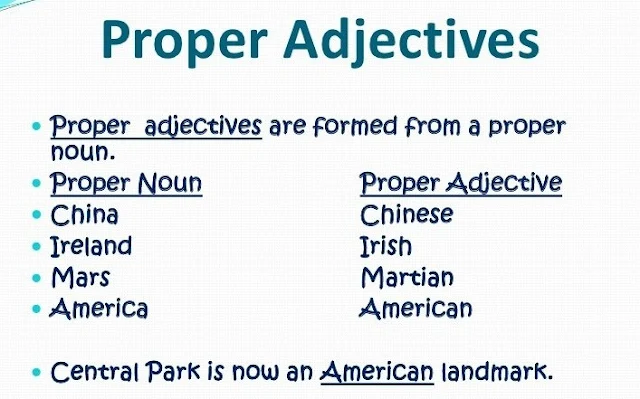What Is a Proper Adjective?
It is easy be confused about the difference between a proper adjective and a proper noun, especially since proper nouns are discussed in elementary school with most children, while proper adjectives are a much more complex concept that are often not made clear until high school or beyond.
Defining Proper Adjectives
You probably are familiar with proper noun: the special nouns in the English language that are privileged enough to have their first letter capitalized. These are the nouns that refer to specific things, places, or people. For example, writer is a regular noun, but Shakespeare is a proper noun.
The noun country is regular, but Canada is a proper noun. Now, proper nouns are in fact the origins for proper adjectives. If Shakespeare is the proper noun, Shakespearean is the proper adjective. If Canada is the proper noun, Canadian is the proper adjective. Just like proper nouns, proper adjectives are capitalized, too.
Proper Adjectives Are Succinct
Sometimes, proper adjectives are used to explicitly and directly describe something. This is like any adjective that describes a noun, but this is a much more specific technique. Using our original two examples, it is much more succinct to write, “The Shakespearian play Hamlet is…” than to write “The play Hamlet, which was written by Shakespeare, is…” so writers tend to prefer to use the first option. Similarly, “The Canadian prime minister” is a much more concise way of writing “The prime minister that is currently in office in Canada.” So, the first main use is to build our adjective vocabulary so we can accurately and describe things with adjectives related to important proper nouns.
More Uses of Proper Adjectives
We can also use proper adjectives in a more metaphorical sense. Consider the sentence, “The tragic romance was of Shakespearian proportions,” which modifies something not necessarily Shakespearian, but gives a sense of the seriousness and intensity that another adjective might not be able to convey to the reader.
Academics often use proper adjectives, formed from the proper names of important thinkers, to describe and indicate certain ways of thinking and certain theories. Someone’s political methodology, for example, might be “Machiavellian,” someone’s approach to philosophy might be “Orwellian” or “Freudian.”
Examples of Proper Adjectives
Let’s look at some examples that use proper adjectives to describe nouns that are of certain cultures. The proper adjectives follow each example in parentheses.
- The Chinese dumplings are the best item on the menu. (Chinese)
- German chocolate cake is very rich in flavor and texture. (German)
- The Japanese paper cranes are meant for good luck. (Japanese)
- The African drums sounded loud in the concert hall. (African)
- The Russian opera by Stravinsky is very beautiful. (Russian)
How to Make a Proper Adjective
You can make a proper adjective in several ways: take a proper noun and try adding the suffixes –ian, –an, or –esque. These suffix often work when converting a proper noun into a proper adjective. Try adding the suffixes –like, –ian, –istic, which are also effective.
There are often established proper adjectives whose forms are known to work best in written language, but you have probably heard an English speaker make a proper adjective up on the spot. It might not be correct, but you certainly will understand if someone says that her boss’s actions are “Hitler-ish.”
Learn More
Proper adjectives are easy to form and use once you get the hang of using them correctly in a sentence. If you are still struggling to understand just what is a proper adjective, consider looking at examples of proper adjectives online or in a grammar book.
What Are Interrogative Adjectives?
Related Page:













No comments